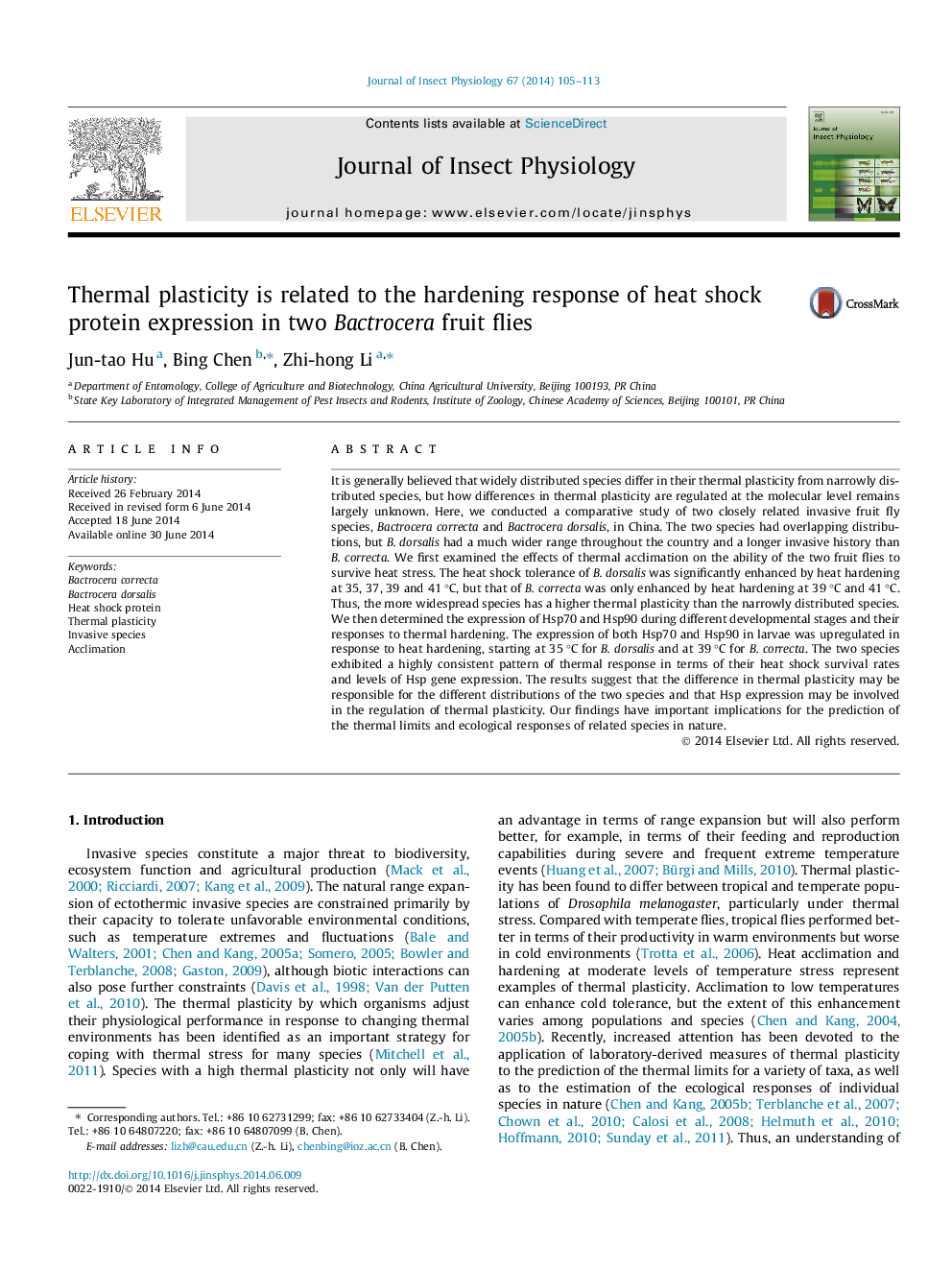| کد مقاله | کد نشریه | سال انتشار | مقاله انگلیسی | نسخه تمام متن |
|---|---|---|---|---|
| 2840460 | 1571003 | 2014 | 9 صفحه PDF | دانلود رایگان |
• Conducted a comparative study of two closely related invasive fruit fly species, Bactrocera correcta & B. dorsalis in China.
• The more widespread species B. dorsalis has a higher thermal plasticity than the narrowly distributed species B. correcta.
• Heat shock survival rates and levels of Hsp gene expression in two species were highly consistent in response to heat.
It is generally believed that widely distributed species differ in their thermal plasticity from narrowly distributed species, but how differences in thermal plasticity are regulated at the molecular level remains largely unknown. Here, we conducted a comparative study of two closely related invasive fruit fly species, Bactrocera correcta and Bactroceradorsalis, in China. The two species had overlapping distributions, but B. dorsalis had a much wider range throughout the country and a longer invasive history than B. correcta. We first examined the effects of thermal acclimation on the ability of the two fruit flies to survive heat stress. The heat shock tolerance of B. dorsalis was significantly enhanced by heat hardening at 35, 37, 39 and 41 °C, but that of B. correcta was only enhanced by heat hardening at 39 °C and 41 °C. Thus, the more widespread species has a higher thermal plasticity than the narrowly distributed species. We then determined the expression of Hsp70 and Hsp90 during different developmental stages and their responses to thermal hardening. The expression of both Hsp70 and Hsp90 in larvae was upregulated in response to heat hardening, starting at 35 °C for B. dorsalis and at 39 °C for B. correcta. The two species exhibited a highly consistent pattern of thermal response in terms of their heat shock survival rates and levels of Hsp gene expression. The results suggest that the difference in thermal plasticity may be responsible for the different distributions of the two species and that Hsp expression may be involved in the regulation of thermal plasticity. Our findings have important implications for the prediction of the thermal limits and ecological responses of related species in nature.
Figure optionsDownload as PowerPoint slide
Journal: Journal of Insect Physiology - Volume 67, August 2014, Pages 105–113
